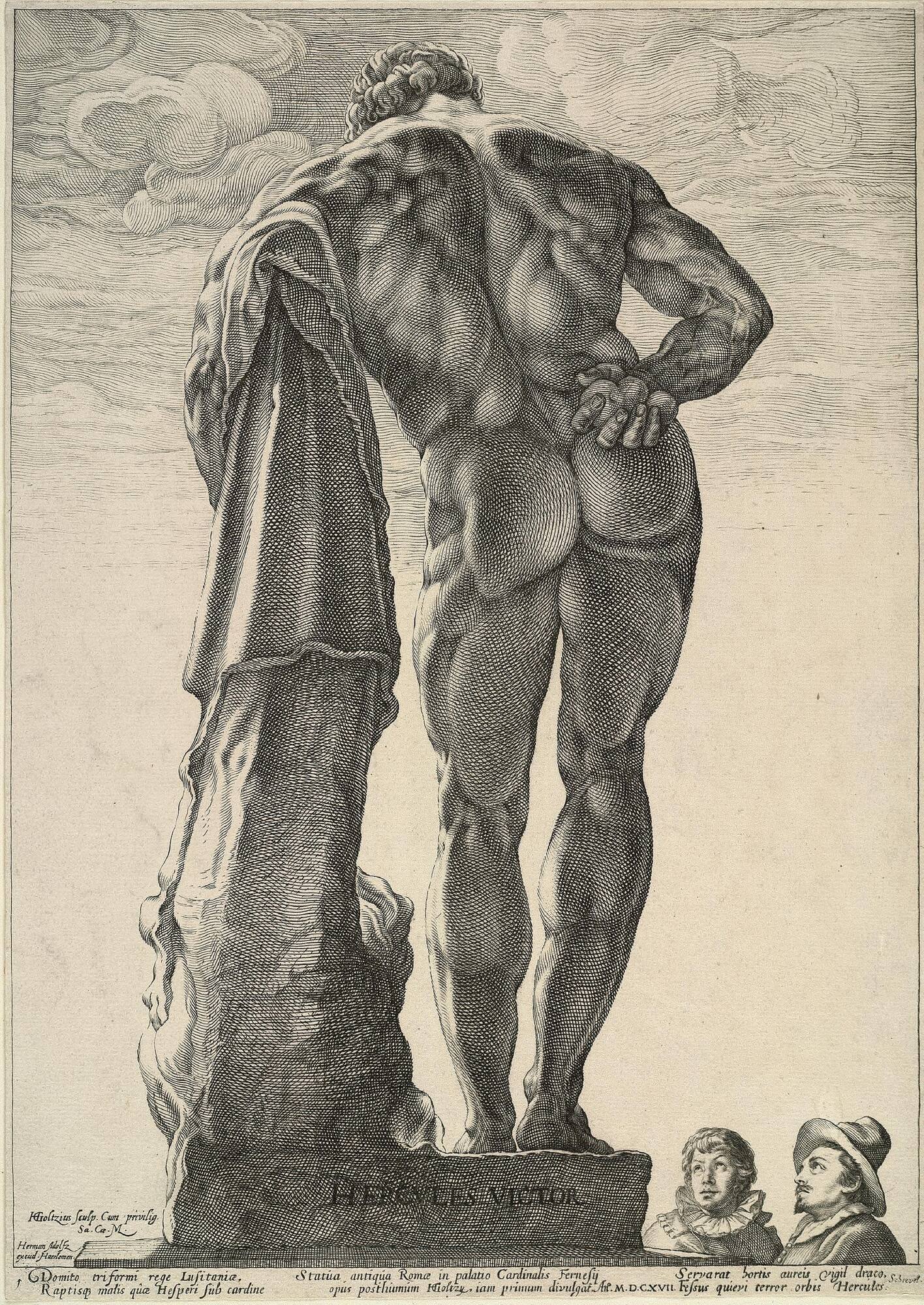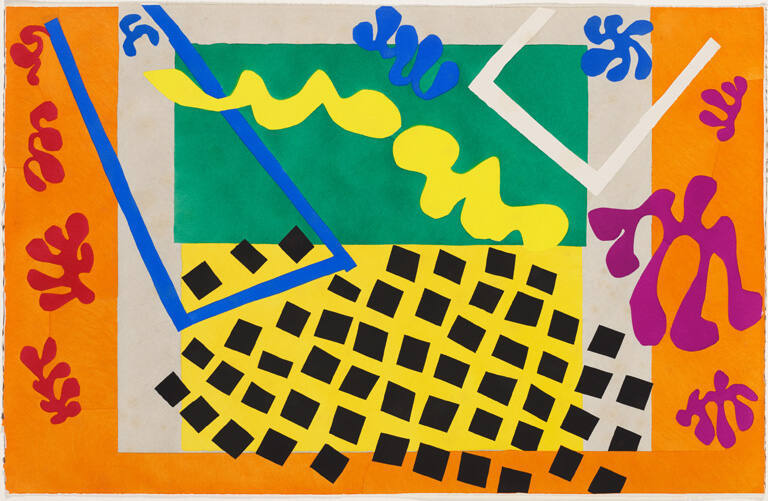
Object Details
Artist
Hendrick Goltzius
Date
ca. 1592
Medium
Engraving on laid paper
Dimensions
16 1/4 x 11 5/8 inches (41.3 x 29.5 cm)
Credit Line
Gift of Paul Ehrenfest, Class of 1932, and Elizabeth K. Ehrenfest
Object
Number
77.028.007
While drawing from the great sculptures of classical antiquity was common practice for artists fortu(…)
While drawing from the great sculptures of classical antiquity was common practice for artists fortunate to travel to Rome from the Renaissance onward, the anatomy of certain sculptures presented greater challenges than others for the draftsman. One such sculpture was the Farnese Hercules, a Roman copy of a Hellenistic Greek sculpture discovered in the Baths of Caracalla in Rome in 1540.
The statue was subsequently moved to the courtyard of the Farnese Palace, where Goltzius drew it carefully during his visit to Rome in 1590–91. Upon his return to his native Haarlem, Goltzius engraved the Hercules. The statue’s extraordinary, enhanced anatomy presents a significant challenge to the draftsman seeking to define the play of light on what appear to be hundreds of rippling muscles. In Goltzius’s replication, he makes the subject his own: a web of overlapping, swirling engraved lines captures the sculpture’s volumes and contours.
(“Undressed: The Nude in Context, 1500-1750,” text by Andrew C. Weislogel and presented at the Johnson Museum February 9-June 16, 2019)












